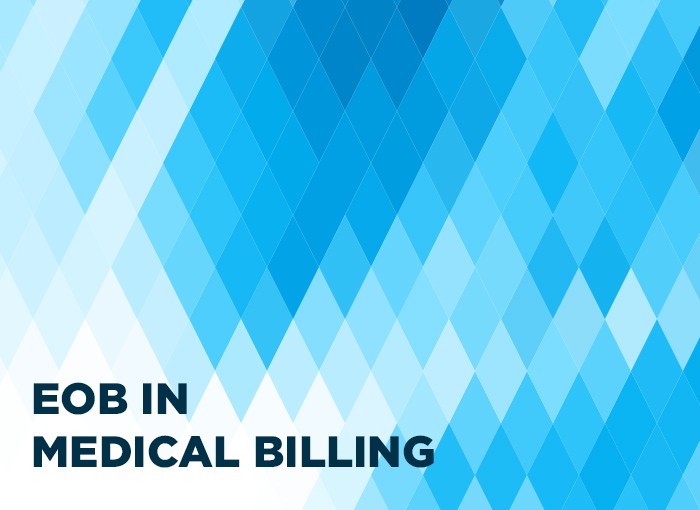KNOW ALL ABOUT EOBS AND ITS BENEFITS
The term EOB stands for Explanation of Benefits which people commonly call it. An EOB delivers comprehensive details regarding medical service payments obtained by individuals. It explains what portion of the medical claims needs to be paid by the active medical insurance plan and what portion of the medical claim needs to be paid by the patient. A Patient often receives an EOB through mail or in their email when their healthcare provider submits a medical claim on behalf of them. However, a person must understand every line of EOB when they are reading it to check whether they or their insurance company is billed for the right service.
Role of EOB in Medical Billing:
After providing the healthcare services, the healthcare provider will bill the medical expenses to the insurance company. Later the patient may also receive a separate bill regarding the medical expenses not covered by the insurance company. This medical statement will also include instructions on whom to pay directly- either the health insurance company or the health care provider.
EOBs are a tool to explain the value of the health insurance plan. With it, a patient can notice the cost of their services and the savings they had with their active insurance plan. For some insurance companies, EOBs also help a person to meet their annual deductible. Once the patients clear their deductible, their insurance plan begins to pay for the services they will receive in the future.
EOB is not a medical bill:
EOB closely resembles a medical bill however it is not a bill. It tells a person how much their healthcare provider has charged them. EOBs act as a reference for medical bills only. The medical bills will come separately and will be sent by the service provider to the insurance company. However, if some healthcare service providers require direct upfront payment then the patient should be reimbursed by the insurance company. But, if any specified medical service or any other medical expense by the medical insurance company is not covered including copay and deductible then that should be paid directly and billed to the patient by the provider.
Information that an EOB includes:
- The date on which a patient has received the service
- The amount that has been already paid by the insurance plan
- Patient’s claim number, health insurance ID, or policy number
- The name of a doctor, dentist, or any type of healthcare provider
- Name of the patient, or the name of a dependent who has received the service
- Procedure codes of the availed service and types of equipment used during the process
- The charges of the service that the healthcare provider has billed to the insurance company, The remaining amount is the patient’s responsibility
Benefits of EOB include:
- An EOB tells a person how much they owe. The amount a person owes should match the amount that is listed to them.
- Many policyholders have now access to their medical accounts online, so they can digitally access their EOBs. It will help them to check their EOBs without waiting for the mail to arrive in the mailbox.
- The EOB helps a person to find the errors in their medical bills such as if they have been billed for the services they have not received or billed twice for the same lab tests. Other errors include incorrect dates of service, or the healthcare provider has billed the wrong amount for the service, and many more.
- EOBS is the best medium that helps a person to understand how their insurance plan works. So, one should make sure that they get an explanation of benefits when they visit their doctor, to check what services they have received and what services are not covered by their insurance plan.
- An EOB also helps a person to track their medical care and costs. A list of EOBs includes all the medical services and equipment they have received during the whole year with their costs. Therefore one should keep their EOBs safe so that they have a record of what they have received and how much they have charged for it.
- An EOB can save a patient from overpaying medical bills charged for the services they availed. A person should examine their EOB mail before bill payment to verify they are paying the correct amount to their healthcare provider according to the patient statement. A person who detects any healthcare service provider errors in their bill should contact their insurance company to report these mistakes.
Advanced EOB Analysis Techniques
Emerging technologies are revolutionizing EOB management:
- AI-powered systems can automatically detect billing anomalies
- Natural language processing helps in the quick interpretation of complex medical billing terms
- Predictive analytics assist in understanding potential future healthcare costs
Best Practices for EOB Management
Regular Review
- Check EOBs immediately upon receipt
- Compare with actual medical services received
- Verify the accuracy of charges and insurance coverage
Digital Organization
- Maintain digital copies of all EOBs
- Use secure cloud storage or dedicated healthcare document management systems.
- Create a systematic filing method for easy retrieval
Proactive Communication
- Contact the insurance provider immediately about any discrepancies
- Understand your insurance plan’s specific terms and conditions
- Keep detailed records of all communications
Conclusion
Explanation of Benefits documents far more than simple administrative paperwork. They are comprehensive tools that provide insights into healthcare costs, insurance coverage, and personal health financial management. By understanding and effectively utilizing EOBs, patients can take greater control of their healthcare expenses and make more informed medical decisions.




